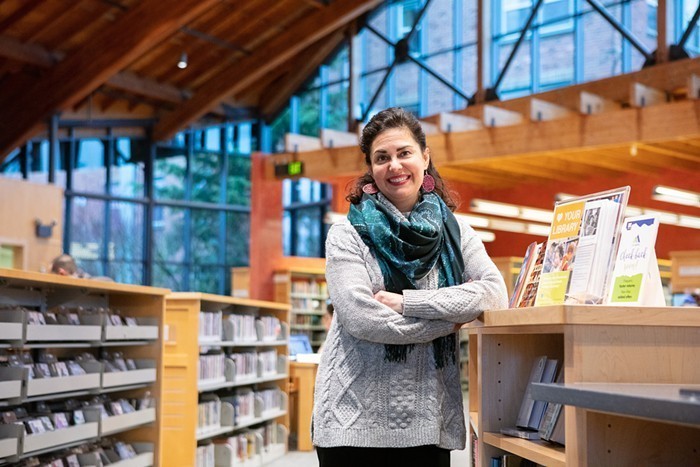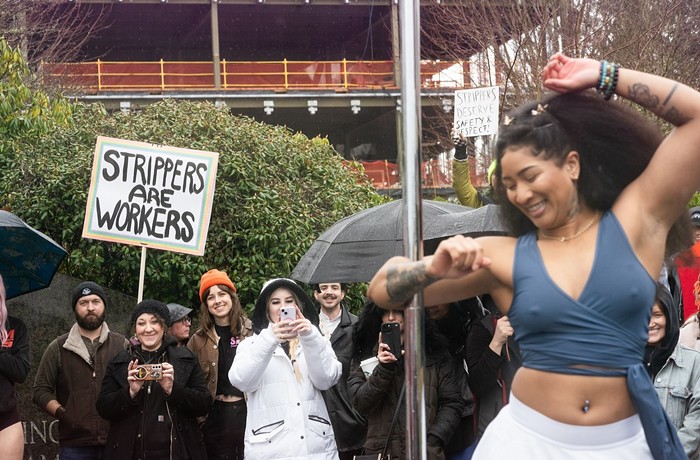On Monday the Seattle City Council heard its first public briefing of Mayor Bruce Harrell’s newly released, once-in-a-decade Comprehensive Plan, which sets allowances for housing growth over the next 20 years. With the housing crisis raging on, the state-mandated update gives the City the opportunity to aggressively commit to increasing the housing supply—or not!
Harrell’s plan does not go nearly far enough in the eyes of urbanists, and its inadequacies set up perhaps the first public battle between the Mayor and his supposed allied council. Keeping their cards close to their chest in the initial meeting, most of the council gave broad “value statements,” as Council Member Cathy Moore called them. Only Council Member Tammy Morales, who will lead Comprehensive Plan negotiations as chair of the Land Use Committee, sided clearly with housing advocates over the Mayor.
“This plan feels like it's planning for our current conditions and not planning for a vision of what we know is coming in terms of growth and what we could become, which is a city of really healthy, vibrant, well-connected neighborhoods,” Morales said in the meeting.
With a powerful ally in the land use chair, housing advocates could actually score some major wins as the council edits the Mayor’s lackluster draft. It's not over, baby.
The council made the most noise about increasing homeownership opportunities. Moore said that transitioning renters into homeowners could break people out of poverty and rebuild the middle class in Seattle. Others backed her up, noting the importance of homeownership for people of color and other economically marginalized people to build generational wealth.
But apparently not all owned homes are equal in the eyes of this council. During the meeting, they wasted plenty of breath whining about the eyesore of townhomes, and Council Member Bob Kettle complained about how little the growth plan talked about “public safety.” I wish someone thought of me as much as Kettle thinks about cops, holy shit.
In my first gloss of Harrell’s draft, I flagged three issues: the low number of potential units, reliance on “urban village model,” and compliance with the House Bill 1110, the missing middle housing bill. Some of the council members shared those concerns in the meeting. They must be fans.
Harrell’s plan would allow “at least” 100,000 new units of housing over the next two decades. That’s just 20,000 more new units than if the City changed absolutely nothing about the current zoning scheme. For comparison, housing advocates demanded a Comprehensive Plan that would allow for at least 200,000 units, considering the city’s current housing deficit of 120,000 units and the fact that more than 200,000 people will move to Seattle in the next 20 years.
Even Council Member Rob Saka, who has never really shown any urbanist inclination, showed some hesitation over the number of units promised by the draft.
“Has Seattle and other neighboring jurisdictions, when they set the sorta ‘floor,’ have they had the political courage and will to build and expand upon that to meet the true needs of the city?” Saka asked. “I don’t know! It's a rhetorical question. It's food for thought.”
Harrell’s plan also continued the notorious and racist “urban village” model, which concentrates density, allowing inefficient single-family homes to dominate the vast majority of Seattle’s landmass. Harrell’s plan includes 24 urban villages, now called urban centers, and seven “regional centers,” which allow even denser zoning than the urban centers.
Morales flagged that the draft does not upzone any South End neighborhoods to meet the regional center classification. She said the zoning amounted to exclusion because it put more economic development opportunities north of I-90.
This Comp Plan draft continues the status quo — and the status quo excluded and left the South End behind for decades.
— Councilmember Tammy J. Morales (@CMTammyMorales) March 13, 2024
We must intentionally plan for economic development opportunities, or we are repeating the mistakes of the past and creating deeper economic inequities. pic.twitter.com/980FVk0sxo
Harrell’s plan also skirts the requirements from the newly passed missing middle housing bill, which legalizes fourplexes in most of the state. The draft includes a “two-tier” compliance model (if you can call it “compliance”) that would zone some areas at high risk of displacement to allow only up to triplexes. The law includes an actual anti-displacement mechanism to delay implementation in high-risk areas, but the Mayor decided to do his own thing! Everybody’s so creative.
Moore said she does not “really see [the two-tiered model] as a viable displacement tool.” The City basically already allows three units on any plot anyway with ADUs and DADUs, she noted. Moore, as well as many [the two-tier compliance model]er colleagues, called for strong anti-displacement measures, but she did not specify the kinds she might support.
Council President Sara Nelson will be one to watch, given her clear influence this year. In the Monday meeting, she didn’t reveal much. She shouted out Harrell for allowing more corner stores in his plan, but she seemed to brush off the public’s concerns about the actual number of units his plan would bring in, reiterating that zoning is just one component of housing production. It’s of course true that zoning is only one component of housing production, but it is also true that zoning is one of the biggest components of housing production in the council’s control, and so, if this council is serious about increasing affordability and reducing homelessness over time, then they ought to use their powers to the fullest extent.
The temperaments of each council member will become clearer as negotiations heat up. For now, the City kicked off a 60-day public comment period, and Morales, the only clear ally to the urbanist-left, encouraged everybody to get involved. Otherwise, we may get stuck with this plan–or worse, the NIMBYs could water it down.




















